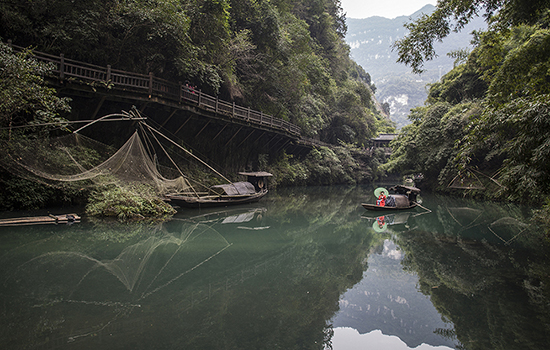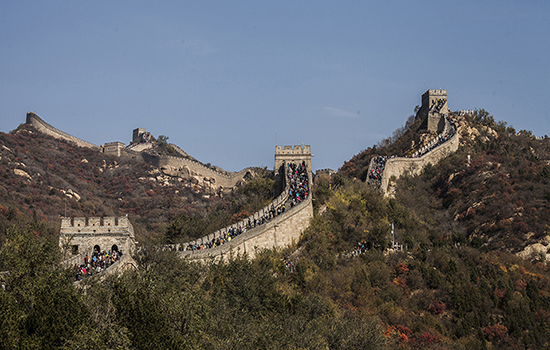Photographer and photojournalist Sherif Sonbol spent 17 days in China, capturing his journey through the Great Wall, Hubei and the Yangtze river in a series of charming photographs that were recently displayed at Al-Ahram's gallery.
Sonbol's travel was supported by The Chinese Culture Center in Cairo. He was accompanied by Egyptian artist Nevine Gendy, who is working on a collection of paintings inspired by Chinese landscape and culture.
Their journey started in Beijing, from which they visited The Great Wall of China.
“It was such a beautiful experience. I was so fascinated that I was walking on it for six hours and didn’t feel it,” the seasoned photographer told Ahram Online.
His photos capture the famous slithering wall, busy with crowds holding picnics in the sun.
In fact, the sun was Sonbol’s main consideration throughout the trip, as China is known for frequent foggy weather.
“A photographer follows the sun and waits for it, the day is planned according to the light,” Sonbol said.
A train ride from Beijing brought the pair to Wuhan, the capital of Hubei Province, where Sonbol was enchanted by one of his main photographic subjects, the Yangtze river, which stretched far into the horizon, "wide like a sea whose opposite bank you couldn't see."
As for his other subjects, Sonbol said he enjoyed taking portraits because of how comfortable locals were around the camera.
“Almost everyone I approached was happy to be photographed, which made the portraits a joy.”

(Photo: Sherif Sonbol)
One of the main stops was at the Yellow Crane Tower, the symbol of Wuhan city with a legendary backstory on generosity.
A Taoist priest in disguise visited Old Xin’s tavern asking for wine. The son of Old Xin was kind to him and offered him wine day after day as the priest kept returning for many months. Eventuallt, the priest revealed his true identity, and to repay the kindness painted a crane that would dance at the clap of hands.
People came from all over the country to see the dancing crane, making the Xin family rich enough to build the tower as a symbol of gratitude to the Taoist priest.
The tower was demolished and rebuilt many times using different architectural features in different dynasties.
“At half hour intervals, steam rises from around the two cranes at the front of the tower, which added to the wonder and magic of the experience,” Sonbol said.
The photographer likes to take his time, and said he spent longer than expected absorbed by the Yellow Crane Tower.
“When I find something beautiful I like to stay there to take it all in; little did I know that more beauty was always awaiting us at the next stop,” said Sonbol.
Perhaps the highlight of the trip was the scenic area of the Three Gorges, one of China’s world-famous sites along the Yangtze.
The crystal lake there offered a lush forest with long pathways, and striking reflections on the water’s surface.
“I chose to leave my tripod behind when I saw there would be no sun. I’ve never regretted anything so much, because it turned out to be the most beautiful day despite the sun’s absence.”
Sonbol called the area a photographer’s heaven.
And as he continued to capture the many facets of the Chinese countryside, he found that “photographs don’t do its beauty justice.”
Check the photo gallery here

(Photo: Sherif Sonbol)
For more arts and culture news and updates, follow Ahram Online Arts and Culture on Twitter at @AhramOnlineArts and on Facebook at Ahram Online: Arts & Culture
Short link: